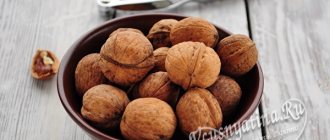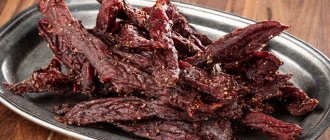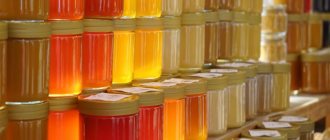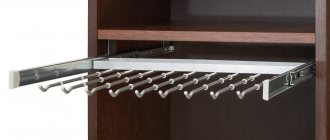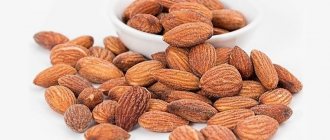A source of microelements, vitamins, and unsaturated fats is a walnut. Just two pieces per day replenish the body’s need for Omega-3 acid, which preserves attention and memory, and phytosterols reduce cholesterol and resist cancer. Walnuts are good for everyone except children under 3 years of age.
September-October is the height of the nut season. The markets have a large selection of nuts in and without shells. The fruits are harvested for future use by owners who have their own garden. It doesn't matter how you became the happy owner of the crop. It is more important to understand how to store shelled and shelled walnuts at home. Which method to choose to minimize product losses during winter storage.
Selection of walnuts for storage
Only fruits of the highest and first grades retain their nutritional properties throughout the year. You can choose high-quality walnuts based on the following criteria:
- the shells are thin, tightly adjacent to each other;
- the ribs on the surface are weakly expressed, slightly rough;
- the kernels are freely separated into halves and quarters and do not crumble;
- The nut is heavy and does not ring when shaken;
- subtle specific smell.
The shelled kernels should be strong, light gray to light brown in color. Blackness or wrinkling of the shell means that the product is spoiled or storage conditions have been violated.
Storing walnuts in a jar or box
Remember the characteristics of walnuts, which should be checked when purchasing.
Fine:
- the amniotic rind is absent;
- smooth, symmetrical shape;
- round fruit size from 2.5 cm and above;
- nuts drown in water.
Badly:
- bright yellow color of the shell or kernel;
- the shell is cracked with your fingers;
- the kernel shriveled and shriveled;
- there are signs of pest infestation.
When a nut is less than 2 cm in diameter and irregular in shape, it is a substandard product. If you pull the halves in different directions and a gap appears between them, the harvest was harvested too early or from diseased trees. They will not be stored due to free access of oxygen to the nucleolus.
If the nuts do not smell anything, they are not ripe. If the smell is rancid with a hint of mold, it is rotten or has expired. Green nuts do not have the ability to ripen like kiwi at home and spoil within a week.
How to properly peel the shell
It would seem that it could be simpler than taking a hammer, hitting it harder - and you're done. However, in this case, the kernel will crush and mix with the shell. Selecting the surviving pieces of kernels will be inconvenient and time-consuming. There are several ways to peel walnuts at home, which will keep the kernels intact and not deformed. Thanks to these methods, there will be virtually no waste (except for the shell itself).
Whole kernels are not only pleasant to eat, but also convenient to use for confectionery purposes - for example, for decorating cakes. Before you start chopping nuts, you must prepare them for this procedure: place them in the oven, preheated to +200°C, for 10–15 minutes. The hard shell prepared by the above method can be easily split using the methods described below.
In a slider package
After the fruits have cooled, place three pieces in a slider bag made of thick polyethylene. Once you hit this bag on a cutting board, the shell will definitely crack, as the heat treatment in the oven has made it very brittle.
The bag is necessary to prevent the shells from scattering in different directions throughout the apartment. Next, remove the shells and kernels from the bag and separate the kernel halves from the inedible parts. This way you will get six halves.
A bottle of champagne
For the next type of cleaning, you need an empty wine bottle with a concave bottom. Place the walnut on a cutting board and lightly hit it with the concave part of the bottle. It is necessary that it falls exactly into the hollow at the bottom of the bottle. Sometimes you need to turn the nut over and repeat the blow. The kernel often remains completely intact when using this method.
Plumber's wrench
If you have such a tool on your farm, shelling walnuts will not be difficult for you. The plumbing wrench has a limiter that will allow you to set the compressive parts of the device to a certain compression width . The fruits are approximately the same size, so you only have to mark once.
Then you need to insert the nut into the gap between the compressive elements of the key and lightly press it down - the shell will instantly crack. If you don’t have such a key at home, you can use pliers, but you need to squeeze them carefully so as not to completely flatten the core.
Kitchen knife
This method is very effective, but is only suitable for neat people. It is necessary to insert the tip of the knife into the blunt end of the nut, at the junction of its halves - where the side of the fruit is blunt and wide, and not sharp. Then slowly loosen the shell at the junction until it separates into two parts. After this, remove the kernels, helping yourself with the same knife.
The sharp side of the hammer
You can easily and carefully break the shell with a hammer without damaging the valuable inside. However, you need to know where to hit and which side of the hammer to strike.
Important! The sharp side of the hammer will reduce the impact area, thereby preventing
the fruit from being completely crushed.
Lay a waffle towel on a wooden cutting board and place a walnut on it. With the sharp, not the blunt, side of the hammer, strike perpendicular to the line where the halves join.
Shelf life
Shelf life depends on treatment before storage, conditions, packaging in which the product is stored. The lifespan of packaged nuts is determined by the manufacturer, but not more than 2 years. And if the product came into the house from the market or was assembled with your own hands, the storage duration is as follows:
- shelf life of walnuts in shell is 2 years;
- peeled kernels – 6 months.
Unpeeled ones last longer, but take up more space. It is much more convenient to keep the walnut kernels peeled. Reducing the temperature to +5° and freezing will help increase the shelf life. These recommendations are also suitable for storing peeled potatoes.
How can you tell if nuts are ripe?
A sign of ripeness of walnuts are cracks in the green pericarp. By this time, the foliage on the tree begins to turn yellow. The fruits ripen unevenly: first, those located on the south side, on the lower branches, crack. Usually the fruits are shaken from the tree and immediately collected. You should not leave fallen nuts on the ground, as moisture and dew will cause them to deteriorate. You should also not pick nuts if the pericarp is still dense. It is better to harvest in several stages. Fruits ripened on the tree are better stored and contain more nutrients.
Do I need to wash walnuts?
In any case, whether the fruits are peeled or not, walnuts must be washed. After all, there is no certainty how they were collected, cleaned and where they were then stored. The shell must be washed to remove traces of pericarp and dirt, which is abundant due to harvesting during the rainy season. If the product is washed at production, it is packaged in packaging indicating that the nuts are washed. But the price is set several times higher.
- Nuts in shell. After washing, unshelled walnuts are dried for 1-2 weeks. They are laid out in one row on a fabric backing and mixed periodically. Drying is more effective outdoors: under a canopy, on a balcony, if weather conditions permit. The fruits are scattered on a net raised above the ground. Drying occurs through continuous air circulation. It is important to protect the batch from birds. Especially crows fly in flocks and steal nuts from their owners.
- Shelled walnuts. The washed kernels are dried in a frying pan without oil at minimum temperature. To do this, they are poured into a bowl and, with continuous stirring, heated for 15-20 minutes until the moisture has completely evaporated. Do not overcook or fry.
The shelf life of walnuts is affected not by the fact of washing, but by improper drying. Wet ones quickly sour and mold.
Pre-drying freshly picked nuts
Freshly picked nuts have high moisture content, so they need to be dried.
Freshly harvested fruits cannot be sent to a permanent storage location. They must first be dried for approximately 10-14 days.
The duration of pre-drying depends on the temperature and humidity.
It is best to dry large volumes of nuts using one of the following methods:
- In breathable bags suspended from the ceiling in a well-ventilated utility room. This method will provide not only high-quality drying, but also protection from mice.
- In boxes made of wood or plastic. They can be placed in a place protected from the sun and rain, for example, under a canopy or on a veranda. The advantage of this drying method is the ability to save space by stacking boxes on top of each other.
Storage in boxes - In a warm place, scatter the nuts in one layer. If the house is heated, you can dry them on the floor, near a warm radiator.
Drying near the radiator
Basic principles of storage
To successfully store walnuts and pine nuts, a number of conditions must be met:
- quality of the original product – premium and 1st grade;
- room temperature +5…+15°;
- humidity 40-60%;
- regular ventilation;
- breathable packaging;
- inaccessibility to rodents, birds, insects.
In an apartment, it is recommended to store walnuts in shell in a dark, ventilated place at a temperature of +22...+25°, humidity up to 60%. Unpeeled fruits are stored at room temperature for about 1 year, shelled ones - no longer than 2 weeks. To increase shelf life, it is recommended to place peeled walnuts in the freezer.
Blanks
One way to store peeled kernels is to prepare preparations, for example, nuts in honey. To do this, you need to combine bee honey with kernels in a 2:1 ratio. You can eat the dish immediately, or you can let it brew in a cool place for several days. Such preparations should be stored in a household refrigerator in a closed, sterile container. Product shelf life is 1 year.
Tara
For long-term storage, you need to choose the right container. It must be durable and well ventilated. For dried fruits in shell, it is recommended to use:
- polymer nets for vegetables;
- cellular plastic fruit boxes;
- corrugated cardboard boxes;
- fabric bags.
Storing walnuts in a bag or basket.
Peeled walnuts are stored in airtight containers with lids and in vacuum jars. Thick plastic bags are only suitable for storage in the freezer. To increase shelf life, you can use a household vacuum sealer. In an airless space, oxidation processes stop, which increases the storage time by 2 times.
High and low air humidity
Spoilage most often occurs if the product has been left in a damp room for a long time. As a result, the kernels become damaged by mold and become unsuitable for eating.
Corrupted kernels
Prolonged storage in too warm and dry a room leads to desiccation and drying out of the kernels. Over time, they noticeably decrease in size and lose their pleasant, sweetish taste. Together with the moisture, valuable oils, which contain a lot of useful substances, evaporate from the nuts. In addition, at temperatures above 20˚C, pest larvae begin to become active, which can destroy most of the reserves.
Important information: A common cause of mold is late harvesting. A nut that falls from a tree onto wet ground spoils within 3-4 days. Therefore, owners of household plots should get into the habit of collecting fruits that have fallen to the ground every day and immediately sending them for drying.
If you are stocking up for the winter and purchase nuts in large quantities, then before purchasing, be sure to crack 5-10 pieces and taste them.
How to properly store walnuts at home
Nuts are rich in fat. Under the influence of heat, they split, giving the products a rancid smell and taste. It is important to know the conditions and rules for storing walnuts at home to prevent this from happening.
For long-term storage, it is not recommended to purchase peeled ones. It is better to buy it in shell and remove it yourself. Then there will be exact confidence in the quality of the kernels, their dryness and compliance with storage conditions.
What should I do if the kernels start to deteriorate? Is it possible to store the nuts in the freezer? If rot or mold or any suspicious plaque appears, there is no point in resuscitating the nuts, much less using them for food. Freezing, boiling, calcining is useless. This way, only the appearance is saved, but aflatoxins have already formed in the fruits, which are not excreted from the body, cause allergies and damage the liver.
In a shell
Nuts need to be provided with the correct microclimate in order to preserve them for up to 2 years. The optimal solution to the question of how to store walnuts in shell is to maintain the temperature at +5...+15° and humidity not higher than 60%. The conditions are no less strict than, for example, when storing salted lard. If it is not possible to create such parameters, the fruits are kept at room temperature for no longer than 1 year.
Step-by-step storage instructions:
- Sort the fruits, sort out the cracked ones;
- rinse thoroughly and dry;
- arrange in nets, boxes with holes;
- place in the pantry, on the balcony, protected from light;
- ventilate the room once a week;
- review inventory status once a month.
Peeled halves and chopped walnuts
A product without a natural casing quickly deteriorates. Store peeled walnuts in the refrigerator in sealed containers made of plastic, glass or tin for no longer than 6 months. At room temperature, the fruits can be stored for no more than 2 weeks.
Do you wash nuts before drying?
Not really
To extend shelf life, peeled nuts can be frozen. To do this, they are packaged in convenient portions in bags or food containers. They will keep in the freezer for up to 1 year. This method can also be used to preserve pomegranate seeds.
When vacuum-packed chopped nut kernels and halves, the life expectancy is doubled. You can buy a vacuum cleaner in any online store, in the small household appliances section.
It is unacceptable to keep peeled kernels in a fabric container at room conditions for a long time. Moths form on them, which will spoil not only nuts and cereals, but also woolen items in the closet. It is extremely difficult to get rid of the parasite later.
Preparation
Shelled nuts are much more convenient to store, because they take up less volume. In addition, by purchasing a ready-to-use product, you do not need to waste time cleaning it.
First, the nuts should be sorted. All foreign matter must be removed. These are usually shell fragments, internal partitions, twigs and leaves. The kernels need to be inspected very carefully for damage and damage caused by insect pests. Bad nuts should be thrown away.
You definitely need to smell the product and pay attention to its color. Fresh kernels are light, without mold and have a characteristic nutty aroma.
If the nuts were bought from hand at the market, they should be soaked in a weak saline solution for at least 20 minutes for preventative purposes. Then the kernels are washed and placed in a colander.
Washed kernels must be dried. This will help destroy larvae, spores and evaporate remaining moisture. You cannot store peeled walnut kernels at home without preliminary heat treatment. This process is very simple but improves the quality of the product.
- You can pour nuts into a hot deep frying pan and, stirring constantly, fry them for about 15 minutes. The kernels should not be allowed to darken or burn.
- You can also heat the nuts in the oven. To do this, the kernels are scattered on a baking sheet in a layer of about 4 cm and calcined at a temperature of about 170.
When the raw materials have cooled, they can be stored.
Contraindications
Although the nut has a lot of positive qualities, before using it, it is better to know who should not consume this tasty product:
- People who have an intolerance to the components of the kernel.
- For allergy sufferers - due to the fact that the composition contains protein of plant origin, which tends to cause allergies (urticaria, dermatitis) or is not absorbed at all.
- For people with skin diseases (eczema, psoriasis), it is possible to provoke an increase in the disease.
- For intestinal diseases, as well as for improper functioning of the pancreas.
- Not recommended for people with rapid blood clotting.
- Should not be used if you have a stomach ulcer or gastritis.
- Use for pancreatitis is strictly prohibited.
Daily intake should not exceed more than 50-100 grams. for one person. Overeating provokes vascular spasm in the brain, and pain in the front of the head is possible. And in the oral cavity, when overeating, stomatitis and inflammation of the tonsils are possible.

